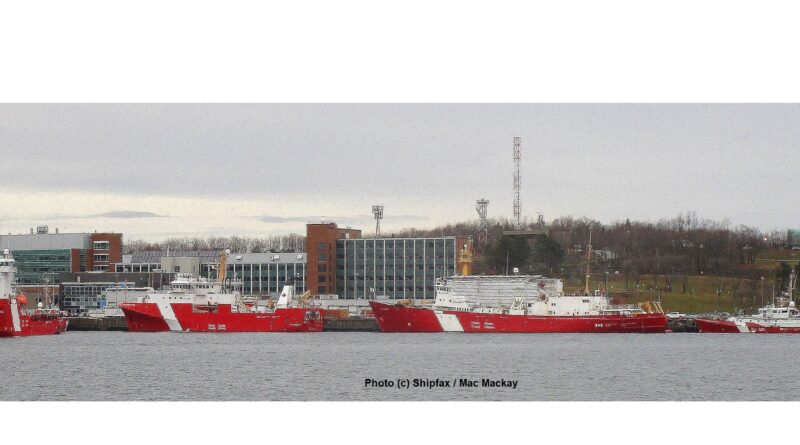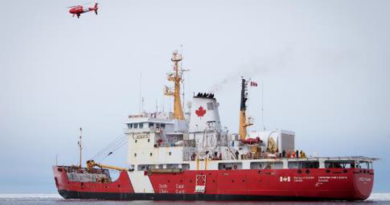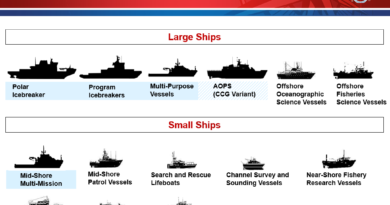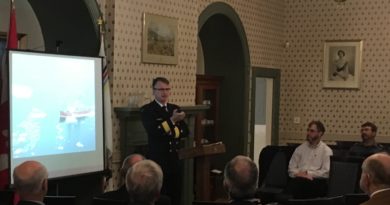Inshore to Offshore: Coastal Zones and Canadian Coast Guard Vessel Capabilities
By Phil Hanbidge
In the world of the marine professional, there is often inconsistency or confusion, and sometimes lively disagreement, in the use of nautical terminology. This phenomenon is so well recognized that an idiomatic phrase has been coined, “Different ships; different long-splices,” to acknowledge that there may be numerous valid ways to conduct (or to describe) nautical evolutions and operations.
One area where terminology is often used without clear consistency or understanding is in describing the various zones of the marine environment, particularly with respect to coastal waters. Different professional disciplines utilize the boundary definitions that best suit their particular application, creating categories that provide relevance to their purposes such as differentiating ship classes and types.1
For instance, in recent decades the world’s navies have focused considerable analysis and discussion on what are often termed littoral operations versus blue water operations. Each category presents distinct challenges and opportunities that require considerable attention in terms of strategies, tactics and vessel capabilities. Within this context, the term littoral is generally applied to all coastal waters and to the interface between land and sea, whereas blue water is considered anything to seaward beyond that environment.
Conversely, marine biologists and oceanographers typically reserve the term littoral for the intertidal zone (between high and low tide); they apply the term sublittoral for waters beyond the low-tide line. Both these zones combine to comprise the neritic zone, the relatively shallow part of the ocean above the continental shelf. The neritic zone, typically extending approximately 200 metres in depth, essentially coincides with the photic zone within which sunlight can penetrate to the seabed, a characteristic that has significant implications for sea-life. Beyond that is referred to as the oceanic zone.
For its purposes the Canadian Coast Guard (CCG) describes the coastal environment and the resultant vessel requirements in terms of Inshore, Near-Shore, Mid-Shore, and Offshore. The vast majority of CCG operations are conducted within Canada’s coastal waters and internal navigable waterways.
The CCG Fleet currently comprises some 126 vessels, whose primary missions include search and rescue (SAR), environmental response, icebreaking, marine aids to navigation, oceanographic science including hydrography, fisheries science, fishery patrol, maritime security, and support to other government agencies and objectives. Most typically, the only CCG missions that regularly extend into offshore waters beyond the bounds of the continental shelf are SAR, fishery patrol, and oceanographic and fisheries science.
In the context of CCG operations, the exact boundaries of the four zonal categories of coastal waters have little relevance to the Fleet, but there is great significance placed on the progressively greater vessel requirements needed to operate within the more challenging environments. Each coastal zone is associated with a package of operational vessel capabilities that relates to such elements as range, endurance, seakeeping, crewing, redundancies (ability to self-support) and so on.
There is considerable overlap between these categories. Offshore and Mid-Shore vessels often work as close to shore as their draft allows, just as Near-Shore and Mid-Shore vessels may venture into more distant waters for a limited duration or only in ideal conditions. Inshore vessels operate within their individual limitations, subject to local conditions.
Although the CCG has not defined the zonal terms precisely within its official policies, one policy reference that touches on these categorizations is the Coast Guard Operations Order (CGOO) 103.00 Ship Naming Policy – Annex A Definition of Vessel Classes and Naming Criteria. This policy document includes a brief summary of key operational capabilities for each of the 17 current vessel classes such as the Offshore Oceanographic Science Vessel, the Offshore Fishery Science Vessel, the Offshore Patrol Vessel, the Mid-Shore Patrol Vessel, the Mid-Shore Science Vessel, and the Near-Shore Fishery Research Vessel. The other vessel classes and descriptions do not explicitly reference a corresponding zone of coastal waters, but their capabilities generally equate to a given zonal category, as described below.
For the purposes of understanding the scope of each term, the following parameters provide some guidelines (albeit unofficial and approximate):
- Inshore – up to 5 nautical miles (n/mi) from shore; range 20 n/mi or more; endurance 8 hours; light-to-moderate sea states [applies to Inshore Rescue Boats, i.e., a summer program that operates small craft for SAR].
- Near-Shore – up to 50 n/mi from shore; range 200 n/mi or more; endurance 7 days (except 8 hours for ‘dayboat’ vessels that lack accommodations); moderate sea states [applies to Near-Shore Fishery Research Vessels, SAR Lifeboats and most Specialty Vessels].
- Mid-Shore – up to 120 n/mi from shore; range 1000 n/mi or more; endurance 14 days; moderate-to-severe sea states [applies to Mid-Shore Patrol Vessels, Mid-Shore Science Vessels, and arguably to the Special Navaids Vessel class].
- Offshore – unlimited distance offshore; range 8000 n/mi or more; endurance 28 days; severe sea states [applies to all Icebreaker classes, Multi-Tasked Vessel classes, Offshore Oceanographic/Fishery Science classes, Offshore Patrol Vessel class and the chartered Emergency Towing Vessel class].
Coincidentally, Fisheries and Oceans Canada (the department within which the CCG operates as a Special Operating Agency) applies a similar capability-based definition within its fishery legislation. Under the Fisheries Act and the pursuant regulations, the term Inshore Fishery is defined not by the depth of water or by the distance from the shore, but rather by the implied capabilities and limitations of a fishing vessel 19.81 metres (65 feet) or less in length. The term Offshore Fishery (also known as Coastal Fishery) is applied to vessels 30.5 metres (100 feet) or more in length, and the term Midshore Fishery is applied to vessels between the lengths of Inshore and Offshore Fishing vessels.
In the context of marine shipping, it can be challenging and somewhat arbitrary to define the precise boundaries of coastal water zones. Each marine service must therefore adopt categories that best serve their own missions and must ensure that their vessel capabilities are optimized to the task and conditions.
Note 1. Different marine services use the terms ship class and ship type differently. In the Royal Canadian Navy, ship type is a general categorization (e.g., frigate) whilst ship class is a specific design within a ship type (e.g., Halifax-class). This Note follows the CCG convention.
Philip Hanbidge is a retired employee of the Canadian Coast Guard, with more than 38 years as a ship’s officer, senior staff officer, and a Project Director for several shipbuilding projects. This work is the sole opinion of the author and does not necessarily represent the views of Fisheries and Oceans Canada, the Canadian Coast Guard, the Department of National Defence, the Canadian Armed Forces, the Royal Canadian Mounted Police or the Royal United Services Institute of Nova Scotia. Photo (c) Shipfax Mac Mackay
A PDF of this Note is available here.




